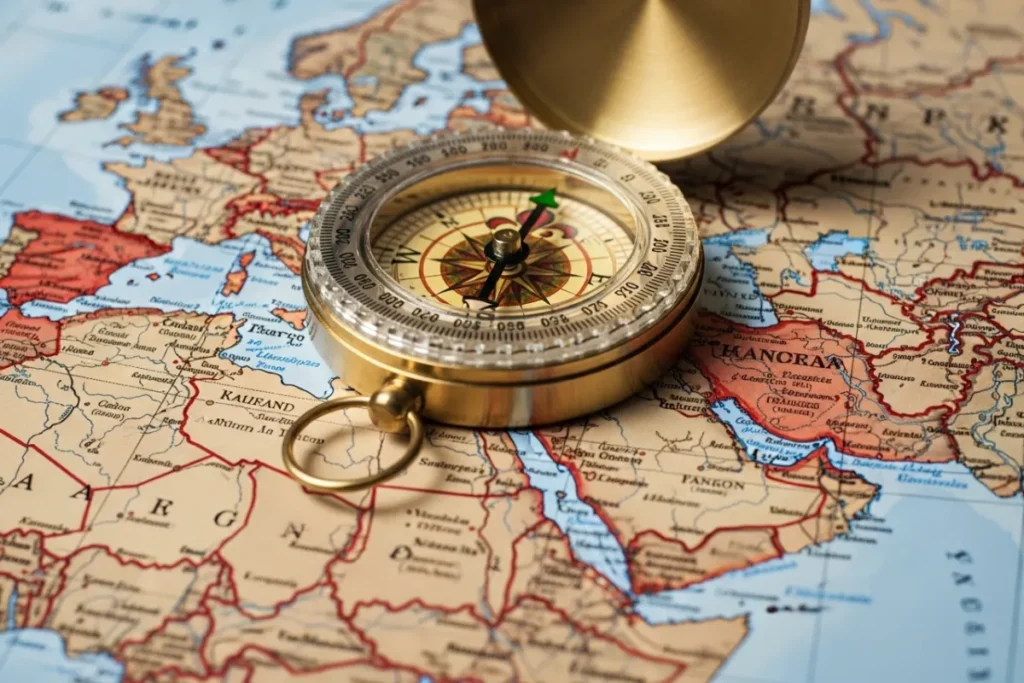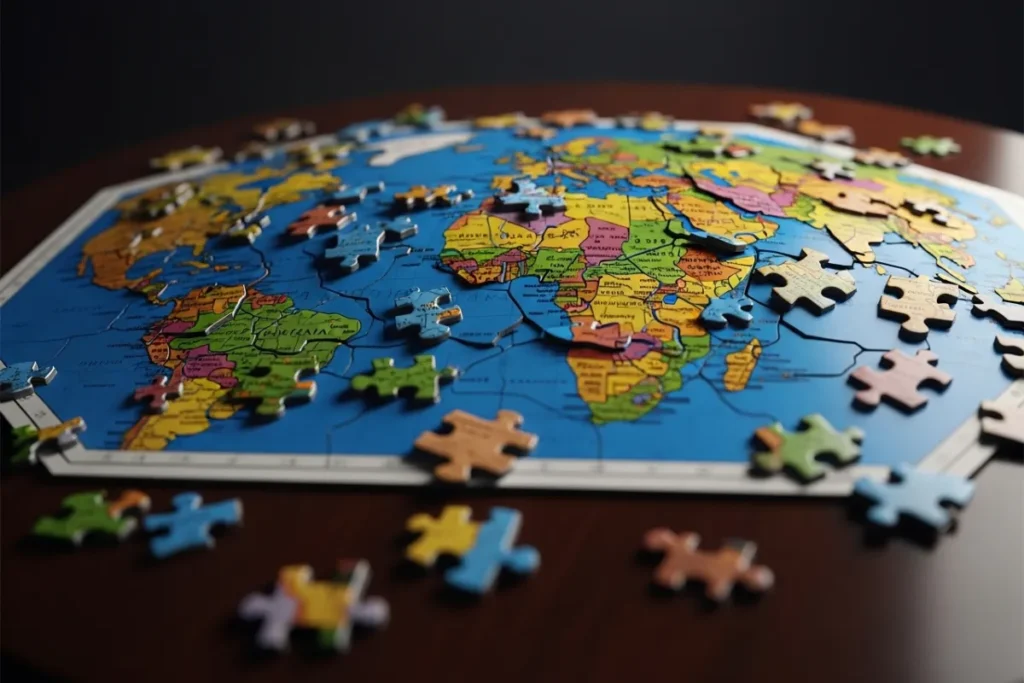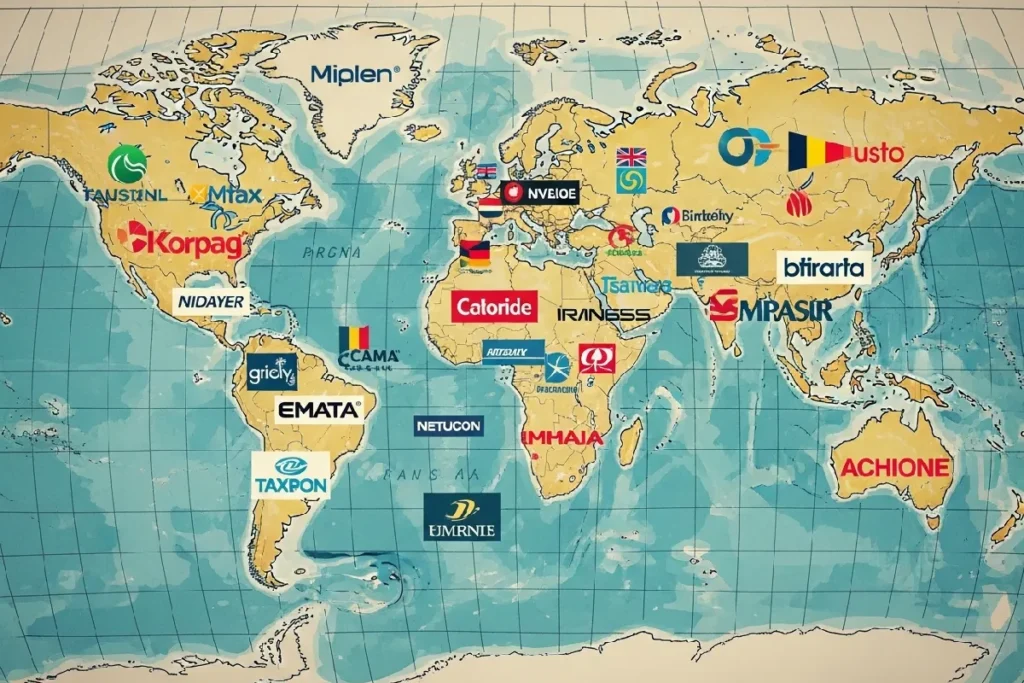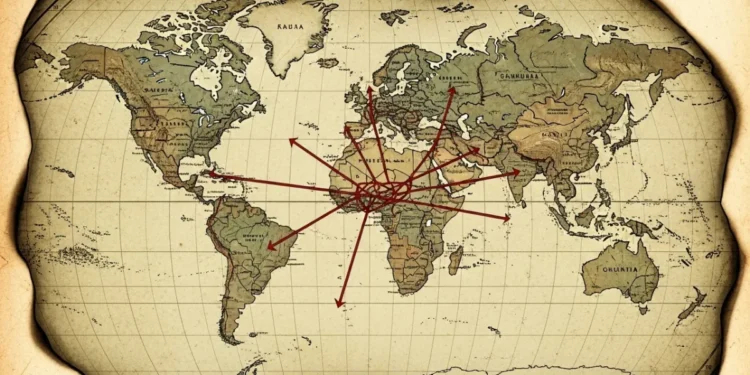This blog post explores the intricate relationship between maps and power, detailing how maps have functioned as instruments of control throughout history, particularly during colonialism. It discusses the evolution of mapping from ancient civilizations to modern cartography and highlights the political implications of map-making. The role of maps in shaping identities, defining political borders, and contributing to contemporary disputes is examined. Additionally, the impact of digital mapping technologies is addressed, raising ethical considerations and the need for inclusive representation in map-making. A reflection on the future responsibilities of cartographers concludes the post.
Table of Contents
Introduction: The Intricate Relationship between Maps and Power
Maps have historically served as more than mere navigational tools; they are potent instruments that embody power and control, shaping societies in profound ways. As artifacts of human culture, maps are not simply representations of geographical locations, but they also convey complex ideas about identity, authority, and the organization of space. The practice of map making has deep roots in the history of colonialism, wherein maps were instrumental in defining political borders and exerting dominance over territories. This colonial cartography was not merely about delineating land but was inherently a tool for visual control of space.
Throughout history, the act of creating maps and power has often paralleled the exercise of power. Maps have played a critical role in establishing political borders, an area rich with implications for governance, cultural identity, and social dynamics. They have illustrated demarcations that not only signify the framework of nation-states but also reflect the historical contexts in which these borders were influenced. The imposition of such borders has shaped the identities of peoples and cultures, often resulting in tensions that persist to this day.
Furthermore, maps serve as a medium through which the narratives of power are expressed and disseminated. They reflect the perspective of those who create them, with the potential to reinforce existing power structures or challenge them. As tools of representation, they play a crucial role in legitimizing authority and can contribute to the exaltation of specific identities at the expense of others. The intricate relationship between maps and power thus underscores how maps and power affect not only our understanding of the physical world but also our social reality, influencing how identities are formed and perceived across different spheres.
A Brief History of Maps: From Ancient Civilizations to Modern Cartography
The evolution of maps is a profound narrative intertwined with the history of human civilization. The earliest forms of maps, dating back to ancient civilizations such as the Babylonians and Egyptians, served primarily as tools for navigation and trade. These maps and power were rudimentary, offering simplistic representations of land and boundaries, yet they laid the groundwork for the sophisticated political constructs we recognize today. The power of maps in shaping identity and political borders history is palpable, as they often reflected the geographical understanding and the sociopolitical ambitions of the time.
As societies progressed, so did the technique of map making. During the classical era, figures such as Ptolemy introduced methods that would influence cartography for centuries. The detailed celestial maps and world maps, incorporating more geographical features, showcased not just the physical space but also the cultural identities of the peoples it represented. This period marked the beginning of maps and power holding a more significant role in the assertion of power, where visual control of space was directly linked to cultural dominance and political machination.
The Renaissance heralded a turning point in map making, fueled by advancements in technology and increased exploration. Cartographers began to create increasingly accurate maps, revealing new lands and reshaping existing political borders. The printing press facilitated widespread circulation, allowing maps to influence public perception and power dynamics significantly. As maps evolved alongside technological innovations, their use transitioned from simple navigational aids to complex tools that encoded political ideologies and societal changes.
In the contemporary era, digital mapping and Geographic Information Systems (GIS) have revolutionized how we perceive and interact with maps. The integration of data and technology has not only enhanced accuracy but has also altered the ways political borders are defined and how identity is constructed in relation to geographical space. Maps and power continue to serve as powerful instruments that reflect both our understanding of the world and the power structures that govern it.

Colonialism and the Use of Maps: A Tool of Control
Throughout history, maps have served as critical instruments of power, particularly during the era of colonialism. Colonial powers utilized maps not merely as geographical representations but as essential tools for asserting control over diverse territories and their indigenous peoples. The practice of map making became entwined with imperial ambitions, shaping political borders history that frequently disregarded cultural and ethnic realities of the land.
One notable example can be observed in the European partitioning of Africa during the late 19th century. The Berlin Conference of 1884-1885 exemplifies how colonial powers utilized maps and power to delineate spheres of influence on the continent. Without consideration for existing societies or political structures, these maps imposed artificial borders that fragmented communities and altered their identities. This visual control of space was not just a reflection of territorial claims but also a means to establish narratives that justified imperial expansion, often portraying colonized regions as ’empty’ or ‘needing civilization.’
Moreover, the manipulation of maps during this period played a crucial role in shaping perceptions of ownership and governance. Colonial cartographers frequently distorted native realities to suit the interests of colonial powers. For instance, they would exaggerate physical features of land to suggest the presence of resources or strategically omit existing settlements to promote a sense of discovery and conquest. Such practices contributed to a deeper understanding of maps and power and identity, illustrating how geographic representations echoed the ideologies of the empire.
In carrying out their objectives, colonial powers thus used map making to impose their narratives on colonized populations, reshaping both geographical landscapes and social structures. This historic exploitation of cartographic tools highlights not only the power dynamics at play during colonialism but also the lasting effects of these distortions on present-day political landscapes and cultural identities.
Maps as Instruments of Identity: Defining Us Through Geography
Maps have long served not merely as tools of navigation but also as instruments of cultural and national identity. Through the lens of maps, we can discern how geographical delineations foster a sense of belonging and national pride while simultaneously alienating certain communities. This duality reflects the intricate relationship between map-making and power, particularly in the context of colonial cartography, which often emphasized the supremacy of certain groups while undermining the identities of others.
When we analyze political borders history, it becomes evident that the boundaries drawn on maps have significant implications for the populations residing within them. These boundaries are rarely neutral; they are constructed narratives that often seek to legitimize the power dynamics of a particular era. For instance, maps that solidified the division of territories during colonial conquests were designed to assert control, thereby establishing visual control of space. As a result, these maps and power not only defined the geographic scope of empires but also crafted a national identity that placed value on specific cultural narratives while marginalizing others.
Moreover, maps contribute substantially to the formation of collective memories and shared narratives. They act as visual representations of a community’s history and aspirations, influencing how individuals perceive themselves in relation to the larger world. This process of identity formation is complex, as maps can evoke pride in one’s homeland while simultaneously perpetuating exclusionary practices against minority groups. The interplay between maps and power and identity raises critical questions about who is represented and who is rendered invisible, demonstrating that maps are not just mere documents but powerful tools in shaping and understanding societal dynamics.
Ultimately, the role of maps and power extends beyond mere geography; they encapsulate the collective identity of a community while also revealing the socio-political contexts from which they emerge. By examining these aspects, we come to appreciate the intricate balance that maps maintain between unifying diverse groups and reinforcing divisions within society.

The Power Dynamics in Mapping: Who Gets to Draw the Map?
Mapping is a complex and multifaceted process that goes beyond mere representation of geographical data. It inherently encapsulates the power dynamics that shape societies, reflecting who holds authority over the depiction of space. Maps are produced by a variety of actors, ranging from government agencies to private cartographers, each bringing their own perspectives, biases, and objectives into play. This raises critical questions about representation: who gets to draw the map, and whose interests does it serve?
The influence of colonial cartography cannot be understated in understanding the political borders history. During colonial times, maps were often employed as instruments of power, utilized to delineate territories, assert control, and enforce dominance over indigenous populations. The act of mapping was not merely an exercise in documentation; it served as a method of visual control of space. Such maps often reflected the viewpoints of colonial powers, thereby marginalizing local knowledge systems and undermining indigenous identities. This erosion of local perspectives inherently shaped the construction of political borders, often disregarding the cultural and social realities on the ground.
Furthermore, maps and identity are intertwined through the narratives they convey. The creation of maps and power can either reinforce existing power structures or challenge them, depending on who is involved in the mapping process. When marginalized communities engage in map making, they assert their identities and resist dominant narratives imposed by those in power. Hence, the act of mapping becomes a political statement that can redefine social relations and challenge the status quo. This underscores the necessity of incorporating diverse voices in the mapping process. Understanding the implications of maps requires a critical examination of the power dynamics involved in their creation and use, ensuring a more inclusive representation of varied identities and space.
Cartographic Controversies: Disputed Territories and National Narratives
The influence of maps on our understanding of political borders history is profound and often contentious. In contemporary society, maps are more than mere tools for navigation; they serve as instruments of power capable of shaping national narratives and identities. Disputed territories depicted on maps frequently become focal points for conflict, highlighting how cartography can perpetuate tensions between nation-states and ethnic groups. For instance, the territorial claims between India and Pakistan over Kashmir have roots deeply entrenched in historical and political complexities, and the maps and power utilized by both nations reflect their respective narratives, reinforcing claims and emotions tied to the land.
Moreover, the case of Crimea emphasizes the power of maps and power in altering geopolitical landscapes. After Russia’s annexation in 2014, the inclusion of Crimea in Russian maps sparked international controversy. This act was perceived not only as a geographical shift but as an assertion of power, identity, and political nationalism that dramatically reshaped the region’s cartographic depiction. Such instances exhibit how maps can be wielded as tools of visual control of space, asserting rights, and fostering disputes that can escalate into larger conflicts.
The ongoing debates around Seychelles’ maritime boundaries demonstrate another layer of complexity in political borders history. Cartographic claims over ocean territories have become contentious as nations vie for economic resources under the sea, underscoring the dual role of maps as identifiers of ownership and potential conflict. Furthermore, the mapping of indigenous lands has increasingly prompted discussions about recognition, justice, and empowerment, showcasing how maps and power can affirm or challenge the identities of marginalized groups.
This landscape of cartographic controversies highlights that map making is not objective; rather, it is inherently tied to power dynamics and narratives that shape both national identity and inter-state relations. Understanding these complexities is essential when examining the intersections of mapping, power, and conflict in the modern world.

Digital Mapping and the New Era of Cartography
The advent of digital mapping technologies has significantly transformed the landscape of cartography, introducing new dynamics in how power is perceived and exercised. In recent years, the proliferation of digital maps and power has enabled a more democratic access to geographical information, empowering individuals and communities to engage with and interpret their surroundings. However, this shift also presents challenges, particularly regarding the reinforcement of existing power structures—issues that are largely defined by the intersections of technology, privacy, and surveillance.
Digital mapping tools such as Geographic Information Systems (GIS) allow users to generate and analyze spatial data like never before, influencing not only how individuals understand both political borders history and their implications but also how governments and organizations monitor and manage resources. This “visual control of space” can serve dual purposes: on one hand, it serves community-led initiatives that advocate for resource management and environmental justice; on the other hand, it can be used as a tool for state surveillance and control, particularly in regions where freedom of information is heavily restricted.
The power dynamics associated with digital mapping highlight a crucial aspect of maps and identity. While digital maps and power can promote transparency and facilitate participation in governance, they often come with the risks of data collection and privacy violations. Individuals may inadvertently discover that their data is being used to influence decisions they are unaware of, casting a shadow on the democratizing potential of these technologies.
As we navigate this new era of cartography, it becomes essential to scrutinize the implications of map-making and power relations that are established through these digital platforms. Balancing the benefits of enhanced access to information against the potential for exploitation remains a pressing challenge for contemporary society.
The Future of Maps: Ethical Considerations and Responsibility
As we move into a future dominated by technological advancements, the responsibilities associated with map-making evolve significantly. Maps, historically tools of power and colonial cartography, have long been utilized to delineate political borders and influence identity. This is especially pertinent in a global context where the visual control of space remains a critical element in political discourse. Thus, ethical considerations become increasingly essential in the process of map creation and dissemination.
The representation of space is influenced by the cultural, social, and political biases of the map-makers. Therefore, it becomes imperative to acknowledge who is represented in these maps and who is excluded. Future map-making must adopt an inclusive approach that reflects diverse perspectives and acknowledges historical injustices. Engaging with local communities in the mapping process can enhance accuracy and ensure that the collected data respects the identities and narratives of those depicted. This form of participatory mapping not only contributes to authenticity but also facilitates a deeper understanding of political borders history within local contexts.
Furthermore, as technology continues to evolve, incorporating tools such as Geographic Information Systems (GIS) can lead to immersive mapping experiences. However, these technological tools come with their own set of ethical dilemmas, including data privacy concerns and the potential for misuse. It is crucial for future map-makers to prioritize ethical standards, ensuring that maps and power do not perpetuate harm or misrepresentation. By fostering critical discussions around maps and their impacts, the next generation can engage with map-making as an act of stewardship rather than a mere technical task.
In conclusion, the future of maps and power relies on a conscientious blend of representation, accuracy, and ethical responsibility. As creators of maps and visual representations of power, we must be vigilant about how we shape these tools and who they serve. Only by engaging ethically with the complex history of maps and their effects can we hope to create a future that acknowledges and respects the diverse identities and histories they portray.
| Theme | Description |
|---|---|
| Evolving Responsibilities | As technology advances, map‑makers’ roles shift from simple cartography to ethical stewards of spatial data. |
| Historical Context & Power | Maps have long been tools of colonial control—defining borders and shaping identities—so understanding their legacy is crucial. |
| Inclusive Representation | Future maps must reflect diverse perspectives, acknowledging who is included and who has been historically excluded. |
| Participatory Mapping | Engaging local communities enhances accuracy and ensures narratives and identities are respected through collaborative data collection. |
| Technological Tools & Ethics | GIS and other advanced tools offer immersive experiences but raise concerns around data privacy and potential misuse. |
| Ethical Standards & Stewardship | Upholding ethical guidelines prevents harm and misrepresentation; map‑making should be viewed as a responsible practice rather than merely a technical task. |
Conclusion: Reflecting on the Power of Maps in Shaping Societies
Throughout history, maps and power have served as more than mere representations of geographic features; they are powerful tools that have shaped societies and influenced political borders. The practice of colonial cartography is a stark reminder of how map making is often tied to power dynamics, reflecting the control exerted by dominant cultures over territories and identities. Through the careful selection of what geography to depict and how to depict it, maps dictate the visual control of space, creating narratives that support specific political agendas.
As we consider the historical implications of maps and power, it becomes evident that they are not neutral artifacts but rather instruments laden with intention and authority. The political borders history illustrates that maps have contributed significantly to the formulation of national identities and have affected social relations across different regions. Furthermore, maps and identity are intertwined, as they not only reflect cultural affiliations but also shape perceptions of belonging and territoriality within societies. These reflections bring us to the realization that our modern interactions with maps—whether through digital navigation tools or traditional paper maps—are continuation of this complex relationship between mapping and power.








